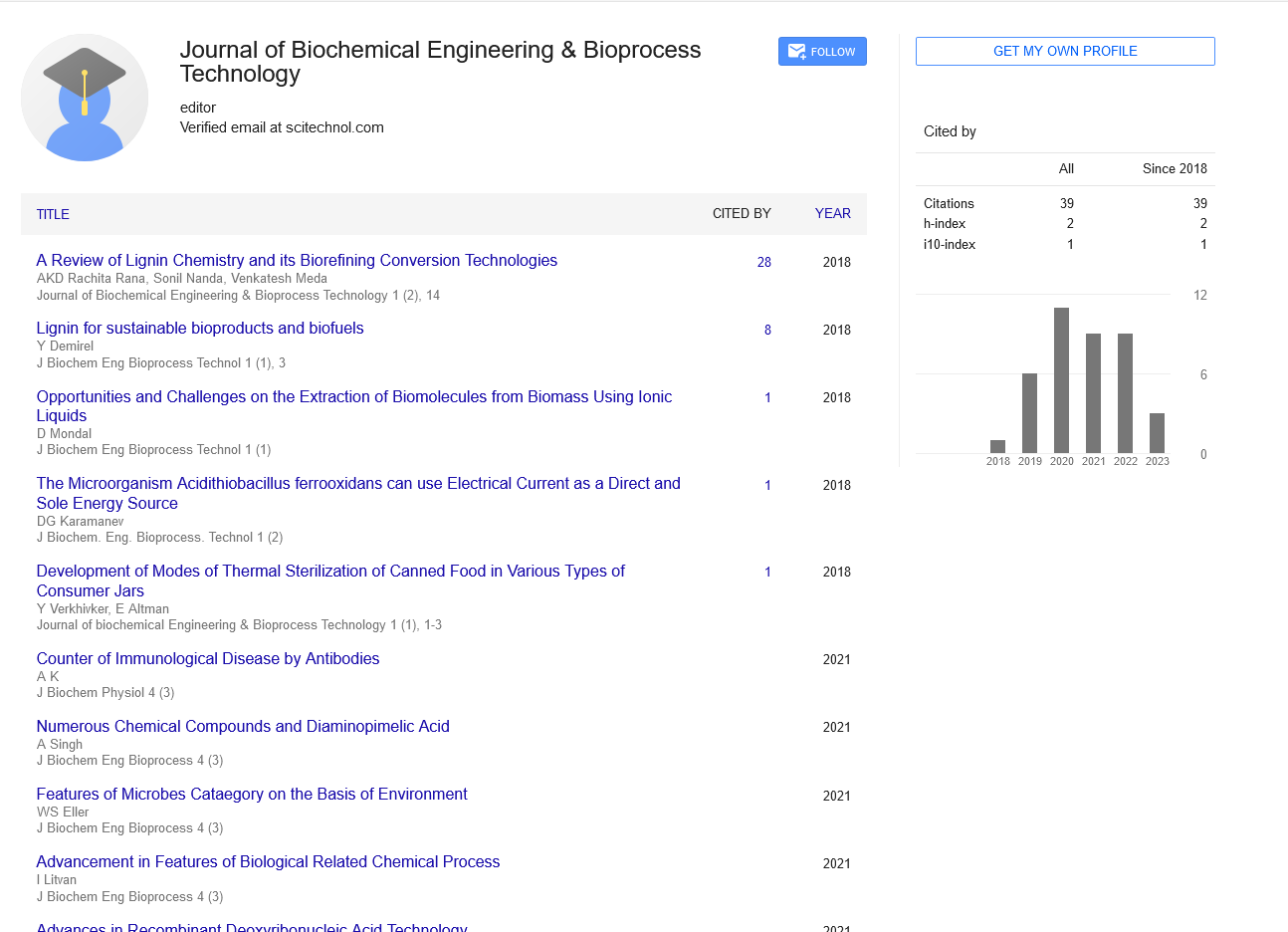Regeneration of adsorbent through potential swing desorption for co2 and h2s removal from biogas
M Farooq
Research Centre for Carbon Solutions, Heriot-Watt University United Kingdom
: J Biochem Eng Bioprocess Technol
Abstract
At present, bio-methane from biogas could supply about 60% of the total energy demand. The key problem for raw biogas is the clean the biogas for the production of bio-methane, where the removal of carbon dioxide and hydrogen sulphide is needed. Activated carbon (AC) adsorption is one the most effective and techno-economic process for conversion of biogas into biomethane if cost effective regeneration of AC can be achieved. In the current study, a granular sample of activated carbon was used for the adsorption analysis of activated carbons with CO2/H2S/N2 gas mixture in a regenerative activated carbon rig. Adsorption and desorption analyses, capacities of the process and regeneration effects were examined. Electro conductive polymers (ECP) were mixed with AC samples, where breakthrough time was enhanced with 400% when mixed with the PAC and EAC for CO2 adsorption. Following adsorption, in-situ regeneration of activated carbons was conducted using electric potential swing desorption (EPSD) with potentials up to 30V. The analysis showed that the regeneration using the new EPSD method reduced the desorption times with 70- 80% for H2S and CO2, and the accessible adsorption sites were regenerated, where the desorption time was reduced compared with the breakthrough time of adsorption. Hence, the ESPD system could be used for the in-situ regeneration of activated carbons for the subtraction of CO2 and H2S from biogas. This system could have intrinsic advantage when compared with the conventional technologies like the TSA, PSA used for regeneration. This method shows that the adsorption/ desorption cycles lead towards a more efficient and economic biogas to biomethane process.
Biography
E-mail: engr.farooq@uet.edu.pk
 Spanish
Spanish  Chinese
Chinese  Russian
Russian  German
German  French
French  Japanese
Japanese  Portuguese
Portuguese  Hindi
Hindi 